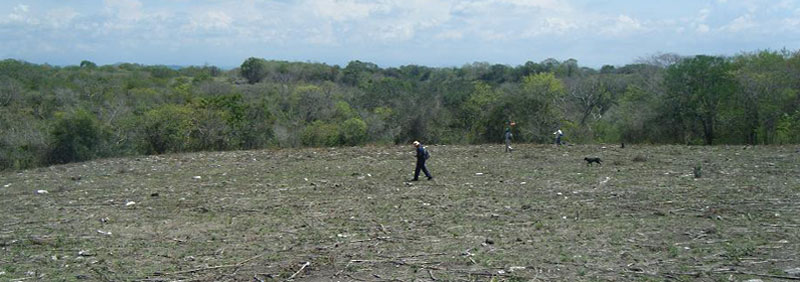Generally, our work is viewed only as digging holes in archaeological sites. However, behind and through any serious research there must exist a theoretical and methodological coherence, which is usually unnoticed by students and the general public. For that reason, we’ve decided to use this update to share our views about this topic and its implications.
The first step in any archaeological research must be based in curiosity: the formulation of questions. Although this might sound very simple, there are a couple of issues to consider 1) the questions will be guiding the whole process and therefore it must be coherent with them; 2) the questions imply theories that the researcher has to take into account in order to avoid contradictions.
The next step is the development of methodological strategies and the selection of the best suitable techniques. In other words, this step represents the practical ways through which the archaeologist will answer the initial questions. For example, if we know that domestic units of certain archaeological site measure 20 meters across but we ignore their location, we need to establish a surface methodology and technique (pedestrian survey) in accordance to that information.

Pedestrian survey, archaeologists are walking the terrain at a 20 meter distance between each other.
Another crucial step is the analysis and classification of materials. Analysis actually starts in the field, since the way archaeologists collect artifacts will influence the sample they will classify afterward. Finally, explanation of the results needs to be related to all previous steps, since theory goes through and beyond the research and researcher. Lack of coherence invalidates our work.
Even though archaeology is one of the most exciting social sciences, we mustn’t forget the complexity of its research processes, which always need to be coherent, from the questions we formulate in the beginning to the answers we build upon all the previous investigation steps.



I am at a lose for what the author of this article was trying to get across. The main theme seems to be that archaeological research should be coherent (while never really explaining what that means), but the author never makes this (or anything else) very clear. Over all this article is very underdeveloped and unclear.
I think this is pretty clear, overall. The authors are trying to make more transparent the steps needed to develop any archaeological project in terms of overall coherency. This may begin with the formulation of basic question but must carry through to the methodologies and theories applied.
I expected something very latest in this post. I guess most Archaeologists are well versed with what has been put across here. we are discussing the research design and the most common mehtod in the ground survey the pedestrian survey.
please attach latest probing techniques and maping techniques that can be applied in rescue archaeology proejcts as well as single manned field surveys.
Thanks for the interest that this article has aroused. We appreciatte the variety of the comments, since they reflect different views and readings.
Justin: the coherency subject is pretty clear. Maybe we missed something in the translation (we are both native Spanish speakers) and that might be the reason for the confusion. We are talking here about a general coherency in the overall investigation. Even though this might sound simple and obvious (as Jenee points out), unfortunately we find that many archaeological researchers don’t line up their initial questions with ther field and lab methodologies and techniques. We wanted to remind everyone of that epistemological key.
Jenee: This article is about epistemoloty, not methodology nor techniques (hence the title) and is aimed to the general public, not archaeologists (please do not miss that we are publishing in a general public, not specialized magazine). We will be pubishing issues on methods and techniques very soon, through the appropiatte channels.
Please keep commenting, we are pleased to hear your opinions, complaints and suggestions!
I am curious about what questions this research is trying to answer, specifically. I do understand the point about having a particular goal in mind before beginning a project. I would be very interested in what your goals are. I also found the information about reburying the pottery sherds very interesting. I did not know that.